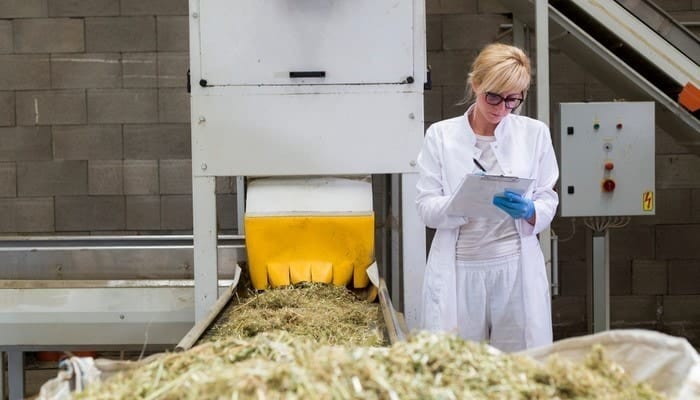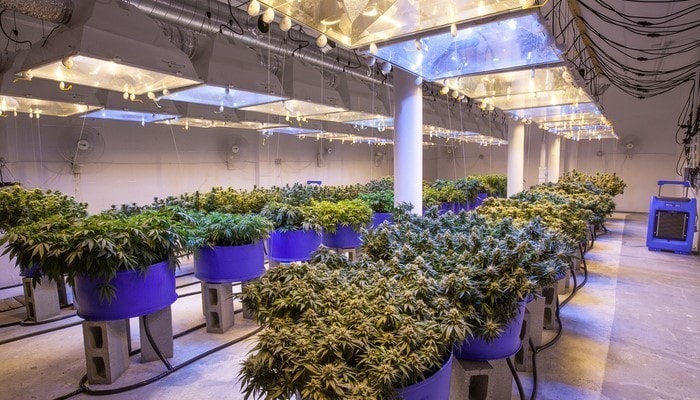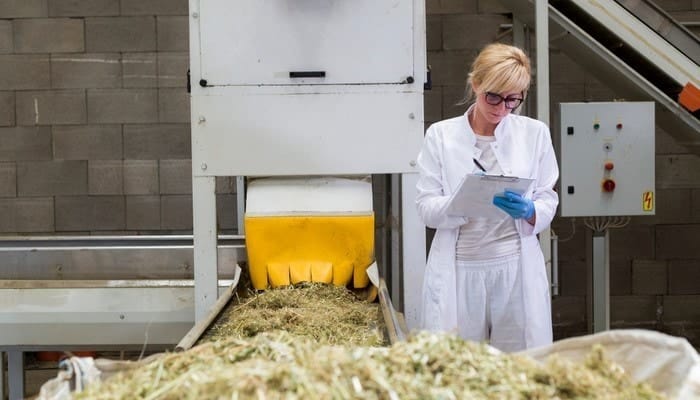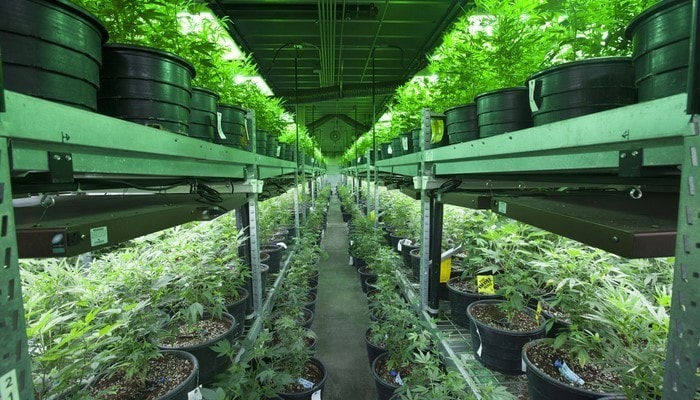In the rapidly evolving world of industrial hemp, understanding how to process hemp products and maintain quality with new conveyor technologies is paramount. This comprehensive guide delves into the intricacies of working with Cannabis sativa L., commonly known as industrial hemp, and offers insightful methodologies for preserving the integrity of hemp products with smart conveyor solutions.
Hemp Processing and Quality Maintenance
Cannabis sativa L., best known as industrial hemp, has two main commercial uses – food and fiber. Hemp seeds are the main part of the hemp plant used for food. Studies show that hemp seeds are a great source of vitamins and minerals, and they boast a healthy balance of Omega 3 and Omega 6 essential fatty acids. The seeds can be sprinkled on meals for a boost of nutrition or used to make hemp oil or hemp protein powder.
Hemp Fiber and Its Commercial Applications
Hemp has also long been used for its fiber. Because the plant’s bast fiber is incredibly strong, it’s ideal for rope, textiles, construction materials, bedding, and insulation. However, with the recent passing of the Farm Bill in 2018 and the removal of hemp from the Controlled Substances Act, hemp and hemp-derived products have been legalized on a federal level, including CBD hemp.
The Rise of Hemp-Derived CBD
This has caused a surge in hemp-derived CBD production, which has THC levels low enough not to cause psychoactive effects or a “high” that is associated with still-illegal marijuana. CBD oils, CBD distillates, and CBD isolate can be categorized as a food product if it’s intended for consumption, like CBD gummies and CBD tinctures. However, CBD oils are also used in commercial products, such as topicals like salves, creams, balms, and other beauty products.

How to Process Hemp Products and Maintain Quality?
Because of the various ways hemp can be used to make different products, there are also different methods for hemp cultivation, processing, and production. This also means that different products will follow different rules and regulations to maintain quality and achieve compliance. In this guide, we will discuss the various ways hemp is processed with an automatic conveyor system and how to maintain quality.

Maintaining Quality in Processing Hemp for Food
Ensuring quality when processing hemp for food production starts during the harvesting phase. Hemp processors for seed or grain production harvest the hemp at the optimal time to achieve the best quality seeds. Harvesting too early will only result in nonviable seeds.
Facility Standards and De-Hulling Process
Maintaining quality when processing hemp starts with a climate-controlled, well-ventilated processing facility. To maintain the quality and integrity of the seeds, the seeds’ outer shells need to be removed without damaging the inside. The removal of the crunchy outer shell is called de-hulling and requires a de-hulling machine.
Traditionally, this was done manually; however, de-hulling by hand was tedious work, which was prone to mistakes and introduced contaminants in the final product. Today, de-hulling machines do everything from removing the seeds’ hard outer shell using a gentle vibration technique to cleaning hull residue and disposing of the kernels.
Food Safety Processes and Controls in Hemp Processing
Because the hemp seeds are processed for consumption, hemp processing facilities for seed production must follow the same strict food safety processes and controls that all food processing facilities must follow. This involves complying with sanitary standards, such as procedures to control insects, rodents, and other pests. This also includes procedures for cleaning and sanitizing processing equipment and storage areas.
Quality Control in Hemp Seed Processing
Beyond keeping the processing facility pristine, quality control personnel also work to ensure product quality. Hemp seeds are fragile. They shouldn’t be picked up carelessly or moved in a manner that could cause the delicate seeds to burst. Once hemp seeds are damaged or moisture is introduced, they can become breeding grounds for bacteria and attract mold growth.
For this reason, hemp seeds should be conveyed gently through the different phases of harvest processing. Hemp processing facilities benefit from conveyance systems like the tubular conveying system, which were designed to eliminate the accumulations of fine particles that may contaminate the seeds. The conveyance system has an enclosed tube that ensures the seeds are clean and safe while in transit, whether they are on the way to storage or packing.

Maintaining Quality in Processing Hemp for Fiber
Processing hemp for fiber production involves processing the hemp crop’s stalks. For CBD production, the leaves, stalks, and roots can all be used. When harvesting for hemp fiber, hemp farmers will typically wait until the stalks are mature for stronger fibers. A tractor with a row of blades will run through the hemp farms, cutting the stalks at the same height. The hemp crops will then be stacked standing up to begin the drying process.
Drying Process and Decortication
When drying hemp, the stalks are typically left in a cool area with a moisture level of no more than 15%. There are also hemp production practices that take the harvest and dry it in an enclosed room filled with multiple fans. More advanced hemp processing facilities use sophisticated hemp drying systems that utilize industrial-grade dryers that can dry tons of wet harvest in a matter of hours.
Decortication – Separating Fiber from Stalk
A decorticator will then be used to break apart the woody pieces of the stem while also collecting the stalks’ bast fibers. Preserving adequate moisture levels is essential to maintaining quality because too much moisture can allow mold to grow and spread. A harvest that is too wet can also cause the hemp material to degrade quickly and become contaminated with bacteria.
Extraction Techniques for CBD from Hemp
For hemp farmers processing the hemp for CBD extraction, they will use the hemp flower and plant trimmings and dissolve the plant waxes. They will go through a solvent process followed by an evaporation process that leaves the CBD in oil form. There are other CBD extraction processes that use olive oil or a CO2 method. CBD may also be extracted from hemp biomass.
Compliance and Quality in CBD Processing
Because hemp CBD may be processed for food production and, therefore, ingestion, it must also follow the same rules and regulations enforced in food processing plants. The difference with CBD products, however, is that for them to be legal, they must meet the Farm Bill’s low THC level requirements. For this reason, hemp processing facilities that extract CBD oils, CBD distillate, CBD isolate, and so on should conduct THC testing to ensure the final product contains no more than 0.3% THC.
Ensuring Overall Quality in Hemp and CBD Production
Maintaining quality, whether for fiber production or CBD production, can be achieved by cleaning conveyor belts for hemp processing. Using equipment that is easily cleaned and designed to minimize or eliminate contaminants is key to mitigating the risk of product damage due to the spread of mold, bacteria, or infestation of bugs or rodents.
Aligning Industrial Hemp Production with Food Quality Standards
In many ways, growing industrial hemp follows the same product quality guidelines as any food processor. They also require farm management, pest management, and third-party lab results. Whether industrial hemp production is for food, fiber, or CBD, the environment for the raw materials should be dust- and contamination-free. Ideally, they should be in enclosed spaces that are climate-controlled to prevent the development and spread of mold and provide protection from extreme temperatures and outdoor elements.
The hemp processing plants should also be well-ventilated to keep the hemp harvest from spoiling. Finally, the processing equipment should be easily cleaned and designed as an automated conveyor system that transports plant material gently around the hemp processing plant to maintain the integrity and quality of the product.

Discover the Efficiency of Cablevey Conveyors
Ready to elevate your industrial hemp processing with precision and care? Explore Cablevey Conveyors’ innovative solutions designed to handle delicate hemp materials with utmost efficiency. Our advanced conveying systems ensure your hemp is transported cleanly and gently, maintaining the highest quality from farm to final product. Don’t let your hemp production fall behind – contact Cablevey Conveyors today and step into a world of superior conveying technology tailored to your hemp processing needs.






